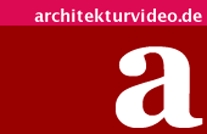bergmeisterwolf - AH-Bräu - Franzensfeste
- Five volumes under a floating roof @ bergmeisterwolf
- Stretched and rich in materials @ bergmeisterwolf
- Open air @ bergmeisterwolf
- @ bergmeisterwolf
- Insights and perspectives @ bergmeisterwolf
- Dining with a view of the brewhouse @ bergmeisterwolf
- Tradition meets modern ideas @ bergmeisterwolf
- Layout first floor @ bergmeisterwolf
- Sitemap @ bergmeisterwolf
- View @ bergmeisterwolf
In Franzensfeste in Italy, in the South Tyrolean community near the town of Brixen, the Andreas-Hofer Brewhouse, or AH-Bräu in short, was opened during the 200th anniversary of the Tyrolean freedom wars. One year after planning began the new building was completed in 2009. Gerd Bergmeister and Michaela Wolf were the managing architects, both working for bergmeisterwolf architectural firm, located in Brixen and Vienna. The costs for the expansion building summed up to 2.2 million Euro.
Old and New in a Dialog
After more than a century, during which monumental beer temples unfolded in big German cities, a new era has now begun, obviously. Modern architecture has found its place in the beer producing industry. A good example of how to combine historical structures with new architectural approaches, can be seen with the AH-Brewhouse of the Ganterer family. On a 6.000 square meter large area, the fortress-like and listed Hotel Sachsenklemme can be seen towering between Brenner highway and the national highway.
Barbican and hotel owner Roland Ganterer had been thinking about expanding the old building for quite a while. However, the idea was not simply to make the inn restaurant larger, the principal wanted to have new and innovative approaches realized. In cooperation with the team of architects Bergmeister and Wolf things were realized that were only ideas just a few months before. The result was an object of its own, deliberately detached from the old building, yet still standing within the context of the 19th century hotel building with its fine tradition and its surroundings.
Variety of Materials
The building, combining restaurant and brewery, consists of five different volumes standing apart from each other. They present themselves in various heights, sizes, positions and in an open or closed fashion. They were built on a special supporting grid. A roof-like, horizontal frame with the outlines of a grid structure of steel floats above the building parts and is supposed to let these melt into one.
The arrangement of the individual cubes creates a free area in the form of terraces and closed rooms. The five structures, resting on a concrete floor plate, are diverse in their materials. Outside as well as inside glass, steel, plaster, fair-faced concrete and timber have been deployed. The idea was to clarify the different purposes of the rooms. Quartz compound has been used for the floor. This can be seen in all rooms, except for the beer bar, which has a floor of oak panels.
Beer Treatment and Event Catering in a modern atmosphere
The beer bar and the brewhouse are located inside a fair-faced concrete structure, allowing people passing by to look inside and see what this building is all about thanks to generous glazing. The guests in the bar can watch the brewing process inside the shop window-like brewhouse while enjoying a cool Maß (a one-liter mug of beer). Timber on the walls and a fire-place create a cozy atmosphere. Chairs with heart-shaped openings in the back and geraniums at the windows show the locals’ strong ties to their Alpine tradition down to every detail, but without any traditionalistic ingratiation.
You enter the building via a part of the building located right in the middle, a façade covered with anthracite. The entrance area draws the visitors’ attention towards a massive bar dominating the room. In the back you get to the smokers’ area through a door in a glass wall. Also from there you have a free view, across the garden in this case.
Kitchen and sanitary facilities have been placed in another building part. What catches the eye immediately is the golden façade made of Alucobond panels. The material consists of two aluminum covering metal sheets with a core of plastic or minerals.
Faced with timber outside as well as inside: the so-called “Südtiroler Stube“ (South Tyrolean parlor). As traditions wants it, it has small windows, benches in the corners and timber cladding on the walls. The dialog between old and new you can already see from outside, is continued inside.
bergmeisterwolf
Completion: 2009
Floor area: 1,067 m²





















